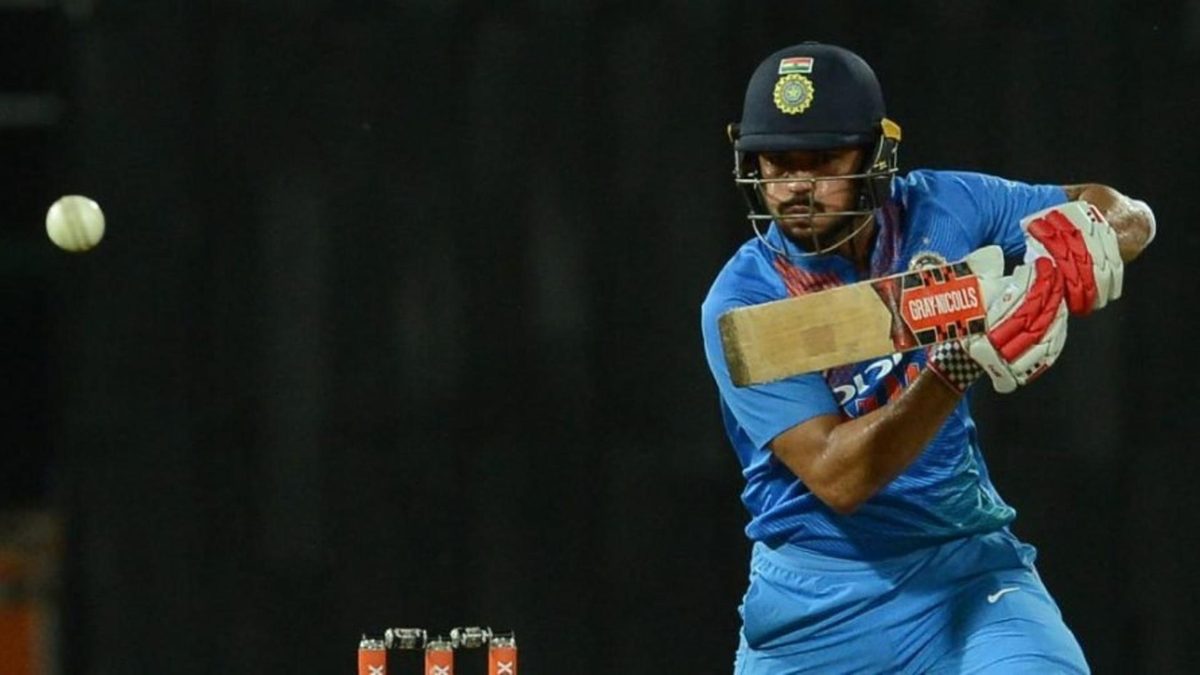
The Vijay Hazare Trophy will reside in Karnataka’s silverware cabinet for the next year. That much was decided by a comprehensive 60-run defeat of Tamil Nadu via the VJD method (India’s DLS equivalent) in the final. But which players would make up the team of the tournament?
Yashasvi Jaiswal (Mumbai)
In his debut season, Jaiswal was arguably the standout player of the tournament. An exciting left-hand batsman, Jaiswal became the youngest player ever to hit a List A double century two weeks ago. His unbeaten 203 against Jharkhand came off 154 balls, including 17 fours and 12 sixes, and was one of three centuries he hit in his six outings. It would be harsh to ask for a better start to a senior career.
Vishnu Vinod (Kerala)
Going by stats alone, the other opener’s slot should really be going to either KL Rahul or Devdutt Padikkal, who hit the most runs in the tournament. But they both did it playing for the best team in the country, whereas Vinod had to do it for a relatively weaker Kerala side. He still made three centuries, scoring comfortably over a run a ball all tournament. Plus, he hit more sixes than anyone else, and hey, that’s what we pay to see.
Proud feeling. Thank you everyone for your blessings! 🙂 #teamindia #mumbai #vijayhazaretrophy @BCCI @BCCIdomestic pic.twitter.com/zjhxqvMFuu
— Yashasvi Jaiswal (@ybj_19) October 17, 2019
B Aparajith (Tamil Nadu)
With only eleven players allowed in a team, sometimes there’s the need to cram an all-rounder in there, someone you can chuck the ball to when you need to mix things up. Aparajith would probably be in here for his batting alone – 598 runs at 66.44, including a steady 66 in the final before he ran himself out. But he also chipped in with eleven wickets at 19.45, including 4-30 against Railways, which he followed up with an unbeaten 111 in Tamil Nadu’s reply.
Manish Pandey (Karnataka, captain)
Pandey captained Karnataka to the trophy on home soil, scoring 525 at 105.00 in the process. He was dismissed for 48 in the one game Karnataka lost, against Hyderabad in the group stages, and it ended up being his lowest score in the tournament. Coming in at 25-2 after eight overs against Chhattisgarh, his classy 142* from 118 balls rescued Karnataka, who ran out winners by 79 runs. Pandey also took fourteen catches, more than any other fielder in a non-wicketkeeping capacity.
Winners in 2017-18 🔥
Winners in 2019-20 🔥
Karnataka Lift Fourth #VijayHazare Trophy 🏆🏆🏆🏆#KARvTN @Paytm pic.twitter.com/iu2NEB1CAj— BCCI Domestic (@BCCIdomestic) October 25, 2019
Babul Kumar (Bihar)
Babul finished his tournament with a century and three fifties. In an otherwise forgettable tournament for his team, as Bihar lost each of their nine games, Babul’s 391 runs at 55.85 made him an outlier bright spot. Through his performances, Babul proved that when the going gets tough, he gets going, making him a reliable player under pressure.
Rahul Dalal (Arunachal Pradesh)
Dalal had a very consistent tournament, with six scores of above fifty in eight innings. He didn’t quite make it to what would have been a maiden List A century, but his performances helped a weak Arunachal Pradesh side to victories over Sikkim and Manipur. Over the tournament, Dalal scored 515 runs at an average of 85.83.
Parthiv Patel (Gujarat, wk)
Tough call on this one, but Patel narrowly edges out Dinesh Karthik, captain of the runners-up Tamil Nadu. Patel hit more runs (442 at 44.20), and topped the wicket-keeper dismissals chart, with fourteen catches and four stumpings. He is also very experienced: Patel was already playing first-class cricket by the time our opener Jaiswal was born.
Sagar Udeshi (Puducherry)
Udeshi’s slow left-arm orthodox helped Puducherry out of the very competitive Plate Group. There was no one standout performance from the spinner, who was impressive for Thornaby in the North Yorkshire and South Durham Premier Cricket League this summer, but there were consistently decent returns, including 3-29 against Chandigarh, 3-26 against Manipur, and 3-7 against Sikkim. His economy rate of 2.87 was the best of any bowler that took five or more wickets.
Roosh Kalaria (Gujarat)
Kalaria took 21 wickets at 16.52, with an economy rate of under four. Only twice in Gujarat’s eleven matches did he go at more than five an over. Stats aside, Kalaria is a left-arm seamer, which gives him a certain cachet. His best performance was on the opening day of the tournament, when he took 4-34 as Gujarat beat a strong Bengal side.
WATCH: Excellent last over by birthday boy Abhimanyu Mithun to get a hat-trick against Tamil Nadu in the #VijayHazare Trophy Final 🔥🔥 #KARvTN @Paytmhttps://t.co/X1poAwqaYv
— BCCI Domestic (@BCCIdomestic) October 25, 2019
Pritam Das (Assam)
With 23 wickets in nine matches at an average of 9.04, there’s not really a case against including Das. Twice, he won the match single-handedly for Assam, when they were defending low totals. With Nagaland chasing 207, he took 5-22 to restrict them to 137. Five days later, in defense of Assam’s 255-7 , he took 5-5 in thirty balls as they collapsed to 75 all out.
Prasidh Krishna (Karnataka)
Krishna is Karnataka’s quickest bowler, but due to injury he didn’t play all of Karnataka’s matches this year. Nevertheless, 17 wickets in eight matches at 13.41 is a good return, including 5-19 in the final group stage game against Saurashtra. Had he not picked up a side strain in the quarter-final versus Puducherry, he probably would have finished as the tournament’s leading wicket-taker.








